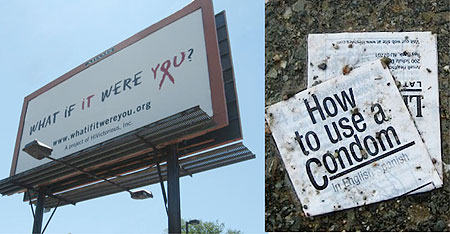HIV and AIDS have held back development and economic growth in many of the world’s poorest communities, and have caused practical problems and emotional distress to large networks of families, friends and neighbours.


HIV and AIDS have held back development and economic growth in many of the world’s poorest communities, and have caused practical problems and emotional distress to large networks of families, friends and neighbours.
For the children growing up in these communities – even those who are uninfected, and who have no family members that are infected ¬– HIV and AIDS are negatively affecting their lives.
Children are adversely affected by the impact that HIV and AIDS have on a country’s essential services. One of the most important services that children need is healthcare. In areas heavily affected by AIDS, hospitals are often overwhelmed by the large number of patients that they have to look after.
In many cases these hospitals face high mortality rates due to such infectious disease, making it even more difficult for them to cope. Providing adequate care for sick children is made all the more difficult with a health system heavily burdened by the HIV pandemic.
AIDS results in a poorer schooling system for the children. In some high prevalence countries, teacher mortality and absenteeism increase as a result of HIV and AIDS.
It is worth to mention that as well as the general education of children becomes badly affected, they may face a higher risk of becoming infected with HIV in the future because effective schooling can help children to become more aware of HIV and give them the confidence to take responsibility for their sexual choices.
There are numerous other ways in which a child’s life can be changed by the effects that AIDS is having on their community.
For people living in countries where HIV is not widespread, it can be hard to appreciate how severely some communities have been damaged by the epidemic.
Additionally in some countries, there are many children living in towns and villages where a lot of houses are left empty as a result of AIDS.
As with families, helping communities to overcome HIV and AIDS is very essential and needs to be carried out to stop new infections occurring, and antiretroviral treatment needs to be provided to those that need it, so that they can stay healthy and fulfill their role in the community.
Many groups and organisations carry out HIV prevention programmes at community level, educating people about how to avoid infection and supplying condoms.
But sometimes these campaigns also attempt to address the stigma and discrimination surrounding HIV, which can stop communities discussing AIDS openly and frankly.
Prevention information can be brought to communities in a variety of ways including billboards, theatrical productions, HIV education in schools, and radio programmes.
Children who live in areas where prevention campaigns are being carried out are more likely to be aware of HIV as they grow up.
Increasing the provision of antiretroviral treatment in a community can help HIV positive adults to work and live relatively normal lives. This enables HIV positive adults to offer support to children who are depending on them.
In communities, as in the family, it is always better to keep children’s family members alive than to provide them with support after that relative has died.
In some developing countries, many children die of the disease where as others experience the scars that AIDS can leave on their lives ¬and almost all of which are avoidable.
Medical treatment in developed countries has ensured that a woman living with HIV can be almost certain that her child will not be infected
If infected with HIV, children can be effectively treated and given ARV treatment and can have longer healthier lives. The problem with some poor communities is that the antiretroviral drugs are still not widely available in many countries.
Developing countries especially require not only the drugs to treat children, but also specialist training for staff, and funding to enable treatment and ongoing care.
The world’s political leaders and decision makers already have these tools to save children from needless suffering, but they are still not reaching most of those who need them.
One of the worst effects of the global AIDS epidemic is the number of orphans it has created, and continues to create.
Ends


